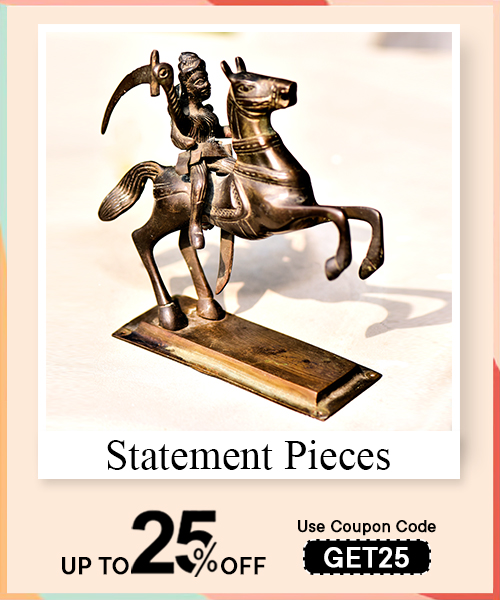Vinayagar, Vinayak, or Ganapati, Lord Ganesha, is one of the prominent gods without any oblivion in the Hindu pantheon. His elephant head and round belly represent wisdom, prosperity, and the destruction of all that hinders.
These variations in his name, Vinayagar, Vinayak, or Ganapati, are not just due to regional and linguistic differences in India but also reflect the country's rich cultural diversity. 'Vinayagar' is the Tamil name for Ganesha, 'Vinayak' is the Marathi name, and 'Ganapati' is the Sanskrit name. Understanding and respecting these variations can promote intercultural sensitivity and appreciation of India's diverse cultural heritage.
He has various names and forms, lest we forget that he is highly relevant in modern religious practices, including Buddhism and Jainism. Being a god who is regarded as the destroyer of obstacles and the god of new starts, Ganesha is significant in religious and social activities. His deeds and tales teach the great values of spiritual depth and still encourage people to worship and admire.
Ganesha is known by several names, each reflecting different aspects of his nature:
- Vinayagar: This name, predominant in Tamil culture, signifies his role as the remover of obstacles and a deity associated with new beginnings.
- Ganesha: Meaning “Lord of the Multitude,” this name highlights his leadership over the Ganas, a group of divine attendants of Lord Shiva.
- Vinayak: A common name that underscores his role as a guide and protector, particularly during new ventures.
Each name conveys a facet of his multifaceted nature, reflecting his importance across various Hindu traditions.
Read More: GANESH STATUE- UNDERSTANDING THE SPIRITUAL AND CULTURAL IMPLICATIONS
First, an urn is brought in with water. Wherever the platform for worship is set, spread the seat and sit. Take the water in hand. Take kush and water in hand, then chant the mantra. Sprinkle water on the idol and the things kept for worship. Do Aachman three times. Take water in hand and chant Om Keshavaya Namah: Om Naranaya Namah: Om Madhavaya Namah: Om Hrishikeshaya Namah. Saying like this, take water from your hand three times and touch it with your mouth, then wash your hands. After this, keep some unbroken rice at the place where Ganesha is to be worshipped. Place the idol of Ganesha on top of it.
After making Ganesha sit on his seat, first of all, take a resolution to worship Ganesh Chaturthi Vrat. For Ganesh Puja Sankalp, bring flowers, fruits, paan, betel nut, Akshat (unbreakable rice), silver coin or a few rupees, sweets, etc.
Place the Kalash on the right side of Ganesha. Wrap a coconut in a red cloth and keep it on the urn so that only the front part is visible. Keep mango Pallav, betel nut, and coins in the pot. Wrap a red cloth around the neck of the Kalash and light a diwali diya.
Invoke Lord Varun in the urn with Akshat and flowers in hand. Along with the mantra 'Om Tattvayami Brahmana Vandamanastdashaaste Yajmano Havibhi'. Ahedmano Varuneh Bodhyurushans Maan Ayu: Pramoshi Asmin Kalashe Varunam Sang Saparivara Sayudh Shaktikamavahayami, Om Bhur Bhuva: Swa:Bho Varun Ihagachchh Ihtishtha. Sthapayaami Poojayami ॥)' Say the mantra. In this way, after worshipping Kalash, first of all, worship Ganesha. Meditate on Ganesha with flowers and 'Gajananam Bhutaganadi Sevitam captcha jambu Falcharu bhakshanam'. Namami Vighneshwarpadpankajam, the destroyer of grief. Read the mantra. After these rites, do the aarti and distribute prasad.
Read More: GANPATI BAPPA MURTI: CELEBRATING THE ARRIVAL OF THE ELEPHANT-HEADED GOD
The Ganesh Chaturthi was first observed in Pune during the King Shivaji era. Now, It is celebrated nationwide. A musical procession is held on the way to the visarjan or immersion of the idol. The drums sound, and loud chants call out the importance.
Families get together to celebrate the day. They pray and make sweets together. On this day, the believers install Ganesh clay idols in their homes. It is believed that by placing Ganesha idols in houses, prosperity and luck will be at your door.
- Make eco-friendly Ganesh idols in your way. This helps to reduce pollution.
- Make Ganesh with play dough. This is specifically for children. It can make your Ganesh Utsav memorable and fun.
- Put rangoli and decorate your house.
- Paper decos are also encouraged since this can replace plastics and reduce environmental degradation.
- Also, decorate the idol with turmeric, sandals, and clothes.
- People purchase puja items and accessories before the ten days.
It is also a time for family reunions. Children who live far away come back to their parents to celebrate the day. People make sweets together, and various games and martial art competitions are held everywhere. Happiness and fun are other definitions for this beautiful occasion.
The ten days are celebrated with lots of preparation. People clean their houses before the idols are brought home. Different structures of Ganesh idols can be seen in the market. People also share sweets on the streets and distribute them in nearby areas. Hence, this festival also teaches the value of sharing.

Ganesh Chaturthi 2025 will be observed on Wednesday, August 27th, 2025. It is a holiday across India and one of the biggest celebrations. Lord Ganesh is known as the Lord of wisdom and intelligence. He is also known as the remover of obstacles and the god of prosperity. Ganesh Chaturthi always falls between August and September. The festival lasts ten days. On the last day, the deity is immersed in water bodies.
Vinayagar Chaturthi is a major Hindu festival celebrating Lord Ganesha's birth. Observed on the fourth day of the Hindu lunar month of Bhadrapada, this vibrant festival has deep historical roots and is marked by various rituals and traditions. Celebrations include installing clay idols of Ganesha, performing elaborate pujas, and participating in lively processions. Over time, the festival has grown, incorporating traditional practices and contemporary elements, making it a dynamic and evolving celebration.
The celebration of Ganesh Chaturthi involves a variety of customs. Traditional rituals include chanting prayers, offering sweets like modaks (Ganesha’s favorite), and performing arati (rituals with light). Families create and decorate Ganesha idols with intricate designs using vibrant colors and materials. Unique festival dishes, such as sweet and savory treats, are prepared to honor the deity. The festival also emphasizes charity and service, encouraging participants to support needy people. Family involvement is central, with activities ranging from crafting idols to organizing community events.
Families gather to pray, make sweets, and decorate homes. To protect the environment, eco-friendly idols and paper decorations are encouraged. Playdough idols are a fun option for kids.
The festival is a time for family reunions, with traditional sweets, games, and martial arts. Homes are cleaned, and various Ganesh idol designs are available. Sharing sweets underscores the festival's spirit of generosity.
According to Hindu mythology, Ganesha was born to Lord Shiva and Goddess Parvati. Parvati, feeling lonely, created Ganesha from clay and brought him to life. When Shiva returned home and found Ganesha guarding the entrance, a misunderstanding arose, leading to a confrontation. In the ensuing battle, Ganesha's head was severed.
To appease Parvati, Shiva replaced Ganesha's head with the head of the first creature he encountered, an elephant. This is why Ganesha is depicted with an elephant head.
Vinayagar Chaturthi is the festival commemorating Lord Ganesha's birth, which falls on the fourth day of the lunar month Bhadrapada. The festival has a history dating back to prehistoric times, a rich heritage that connects us to our ancestors, and is accompanied by numerous bright actions and ceremonies. Rituals include placing clay images of Ganesha, offering prayers to the deities, and performing colorful rallies. The celebration of the festival has also changed as the years pass and, in the present time, it mixes with practices from both the previous culture and the new contemporary one. It is a colorful and active festival. Held in private earlier, it became a public festival in the 19th century due to Lokmanya Tilak and others.
Vinayagar Chaturthi symbolizes the ability to get ahead in the world, and the festival is observed through several customs and traditions. Some age-old customs are performing inventory recitations of prayers, offering modaks to Lord Ganesha, and performing arati, the ritual with light. Both households sculpted and painted Ganesha sculptures with great detail and various colors. Delicious meals are given for the event, with the festival promoting the concern for the welfare of others. Community involvement is also essential: small children make idols, while older members of the families plan some events for the people. This event creates a positive social atmosphere and brings happiness to everyone involved, fostering a sense of community and togetherness.
Ganesh Chaturthi, one of India's most vibrant festivals, is a celebration that brims with joy and activity. The Bhadrapada lunar month, usually in August-September, marks the beginning of this colorful festival. The festivities kick off with the installation of a clay or plaster mold of Ganesha at homes or in temporary structures called ‘pandal.’ This is followed by elaborate pujas that involve the chanting of prayers, mantras, and offerings of sweets, especially modaks, which are Ganesha’s favorite, as well as fruits and flowers.
The ten-day duration of Ganesh Chaturthi holds symbolic significance. It represents the ten days it took Ganesha to complete his journey around the Earth. Each day of the festival is dedicated to a specific aspect of Ganesha's personality or powers.
The essence of the Ganesh Chaturthi celebration is the elaborate religious rites conducted to pay obeisance to Ganesha. Such rituals usually include chanting mantras, such as arati, which involves offering items and light. The arrangements that go into a puja are the positioning of a deity idol with blooming flowers and other special touches. The pompous pujas offer itself as an example of dedication. They are essential and integral to all the celebrations one can associate with Ganesha and how much the devotees revere him.
The festival begins with the sthapana, an idol of Ganesha established in homes or community areas. It is followed by placing the idol on a platform and performing preliminary rituals to invoke Ganesha. The installation is usually followed by the anointing of the idol with colorful paints and decorations, thus creating a backdrop for the subsequent activities. People, especially the families and the community, prepare for the celebration, and this preparation reflects how artistic and pious they are.
The celebrations of Ganesh Chaturthi culminate in the visarjan, in the immersion of the idols of Ganesha in any water body. This ritual denotes the journey form of the deity to his heavenly plane, thus finishing the cycle of creation and again destruction. Practice has it that immersion occurs in rivers, lakes, or the sea. Still, owing to increased cases of water pollution in the present-day world, there is a growing concern about the environmental impact of this practice. Some groups have resorted to using biodegradable materials in their idols, and they also conduct ‘salvation’ collectively in artificial tanks and also in some places. Hence, it is important to use eco-friendly Ganesha idols. Not only do they help protect the environment, but they also signify a growing understanding of the impact our practices have on the Earth and future generations.
Ganesh Chaturthi is a festival that unites spirituality, community, and tradition. By embracing eco-friendly practices and honoring the deeper meaning of the rituals, we can celebrate this festival meaningfully and responsibly. Whether crafting a clay idol with family or sharing sweets with neighbors, the joy of Ganesh Chaturthi lies in the spirit of togetherness and reverence for Lord Ganesha.
Read More: THE ARTISTRY OF GANESHA IDOLS: A JOURNEY THROUGH DIFFERENT STYLES AND MATERIALS
Overall, people around India celebrate the Ganesh Chaturthi with enthusiasm and devotion. It is a festival of love, colours, jolly, and brotherhood. Even people from abroad come to visit India around that time just to see the mesmerising festival of the Hindu religion.















